Harley-Davidson CVO Street Glide Review
CVO Street Glide test by Trev – Images RbMotoLens
I have always had a soft spot for Harley’s Street Glide, so when the chance to throw a leg over the top-of-the-line CVO variant of the model came up, I didn’t have to be asked twice.
In its regular $46,495 guise the Street Glide is pretty well appointed, however the $62,495 CVO Street Glide ups the game considerably. If that ticket price made your eyes water, you won’t want to tick the box for the optional two-tone paint, as then the bike will set you back $70,305…
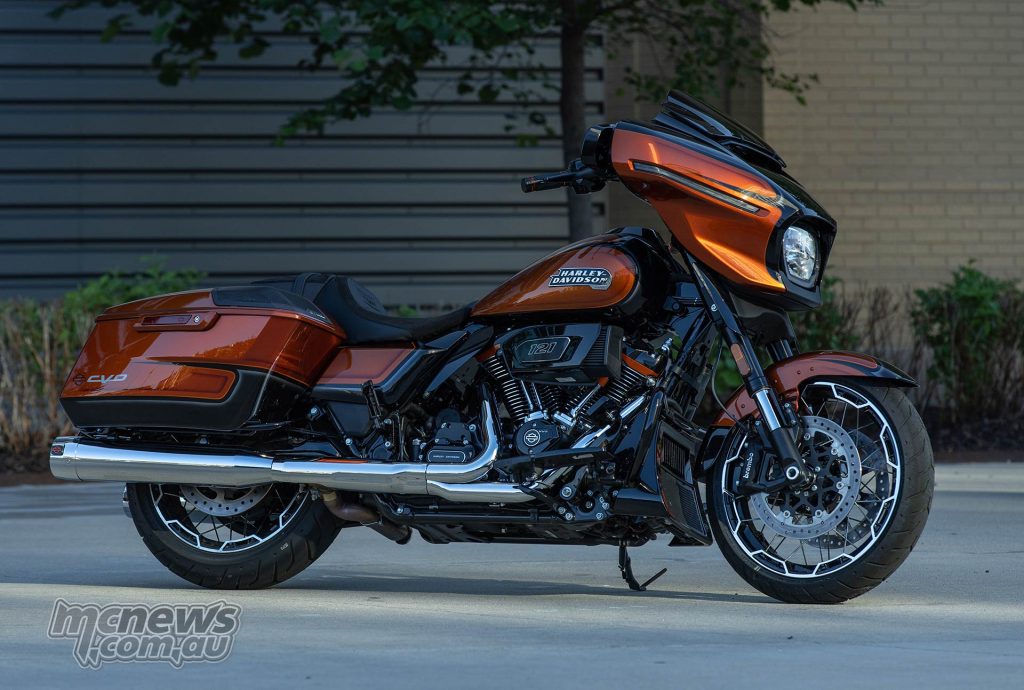
Now, 8k is a big ask for a paint job, especially when the standard smoky grey-silver that Harley calls ‘Dark Platinum with Pinstripe’ looks so classy, but each to their own. Harley apparently sold out of the two-tone option in the American market, while the standard Street Glide is the best-selling model on their home turf.

A big part of my fondness for the Street Glide in years gone by came from the glorious hot-rod-looking array of white-faced analogue gauges scattered behind the broad bat-wing front fairing in front of you.
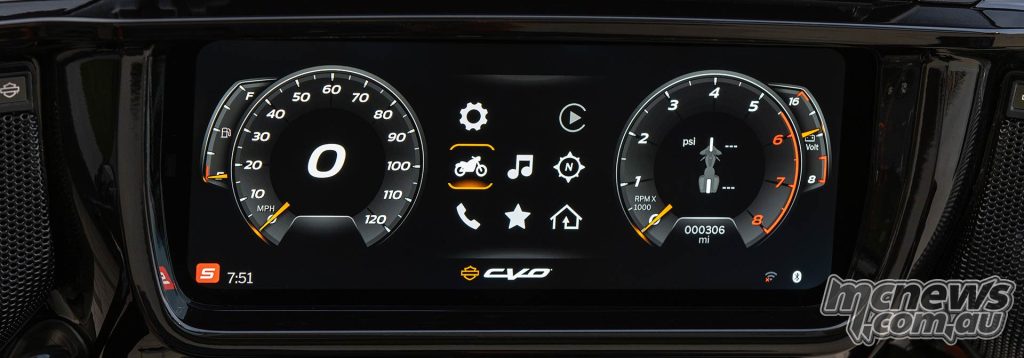
These days, however, we have gone all digital, with the numerous round gauges replaced by a huge expanse of TFT glass that measures over a foot long.

Underneath that full-colour display is a generously sized tray that swallows the biggest iPhone you can buy with ease. A USB-C charging port in the tray keeps your phone topped up, and while it is plugged in, there is enough space in the tray to also hold the key fob, a pair of glasses and even your wallet too, at a squeeze.

That beautiful glossy screen offers full Apple CarPlay functionality when paired with a Bluetooth headset. However, when the battery in your Bluetooth headset runs out, you no longer have access to CarPlay, which can be very annoying. I would be investigating the hard wiring of a small Bluetooth receiver connected to an accessories wire on the bike somewhere, so I had CarPlay functionality without the need for a headset every time I got on the bike. Harley is not on their Pat Malone on this score, though.

Thankfully, the CVO Street Glide also has a great built-in navigation system with the ‘Skyline OS’ infotainment set-up that I actually found preferable to the CarPlay navigation. I could search by points of interest to navigate my way to fuel stops during an afternoon-evening strop from Eildon to Tailem Bend, for the final round of the 2023 Australian Superbike Championship.

However, some of the fuel stops closer to that destination have actually closed down in recent years, thus I had to button off to just under the speed limit while running on fumes to reach the service station at The Bend. The spec’ sheet supplied by Harley states a fuel tank capacity of 22.7-litres. I put 22.62 litres into the tank at The Bend after covering just over 500 kilometres without stopping. All up that was a 750-kilometre opening day acquaintance with the CVO Street Glide. By the time I got home, I had notched up around 2000 kilometres on the bike.
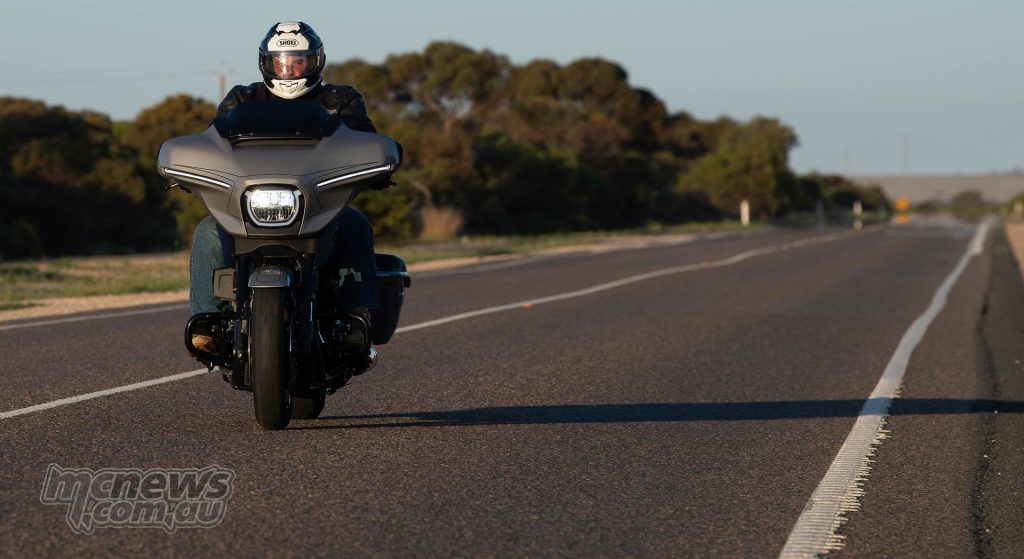
While the seat is much improved from earlier models, I still found that over a long day, the edges did cut into the back of my thighs somewhat. And, of course, when you sit in motorcycles like these, you are pretty much held in a single position, with no way to really move around and spread the load, so to speak. That has its drawbacks, but I guess not that many people will be doing 500 kilometres without a short break of some sort. As for pillions, they would have stabbed or beaten you to death with whatever came to hand if subjected to such distances without stopping. The Street Glide is, by and large, a solo motorcycle.

At 715 mm, the seat height is very low, which makes getting on and off the bike an absolute cinch. This was very well appreciated when running shopping errands in and out of Tailem Bend over the weekend. As were the side-cases.
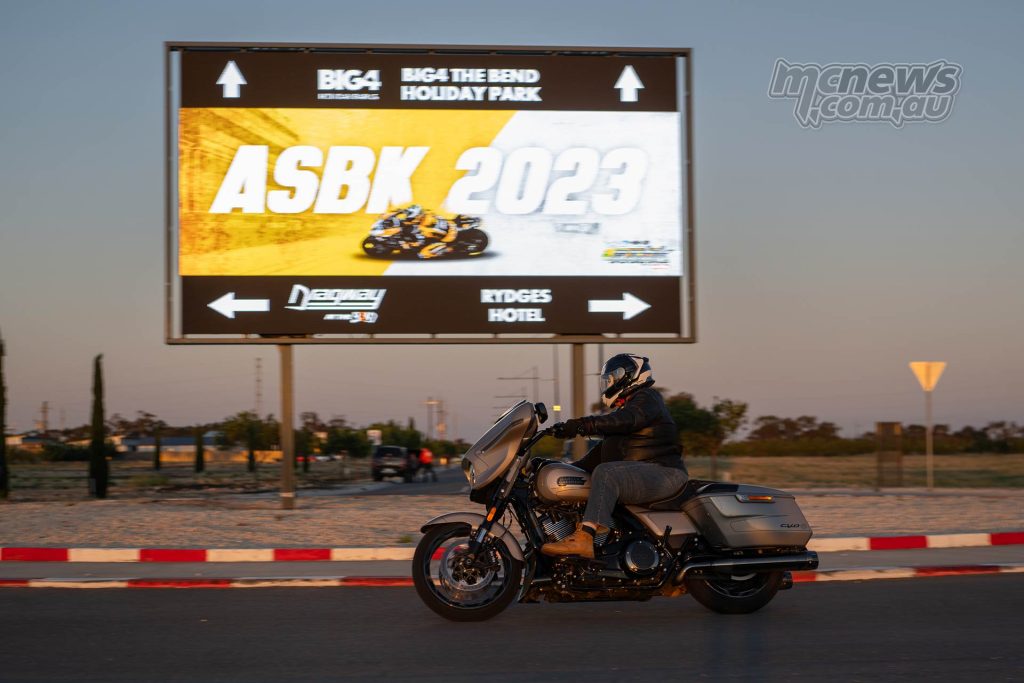
Harley side-stands are generally met with nerve-racking trepidation by anybody new to Milwaukee Iron, but they actually work very well. The way they can allow the bike to rock forward can be extremely disconcerting at first, but it soon becomes familiar enough, and they are quite secure.
Walking the big 380 kg rig in or out of a parking space does take a little strength if you get more than a few degrees from vertical. Once moving, though, riding the bike is a doddle thanks to quite light steering and a sure-footed feel.

You could certainly use this as an everyday bike to commute on. Sitting at traffic lights on really hot days isn’t going to be much fun when astride two-litres of V-Twin, despite its fancy new cooling system, but on every other fine day, I would happily commute on this bike. I don’t like cleaning motorcycles enough to want to ride this beauty in the rain.

Those hard bags don’t hold quite as much as you would expect. It took some creative packing to fit my laptop, camera, basic toiletries, a pair of shoes, a wet oversuit, and enough clothes to last an ASBK weekend. But it did the job and prevented me from wearing a backpack, or having to strap an extra gear-bag over that poor excuse for a pillion seat. At a guesstimate, I would say the Street Glide has less than half the luggage capacity of the Bavarian Stormtrooper (BMW K 1600 GTL), that I rode to The Bend the previous year.

The broad screen protects the shoulders pretty well, but an extra inch in the middle would make a huge difference regarding air-flow over your helmet. That is not a dick joke, by the way. There is an optional taller screen that I would be keen to try.

The stereo system is a Rockford Fosgate Stage II set-up with a four-channel 500-watt amplifier powering a pair of three-way 6.5-inch fairing speakers combined with another set of 5×7-inch in the saddlebags. It is seriously loud and sounds great when bumbling around town but on the highway at 110 km/h it still didn’t cut the mustard for me. But no stereo system I have used ever has. Up to 100 km/h, though, it is really useful, and in 80 zones, the audio is pretty much faultless.

The omission of electronic suspension on such a high-priced motorcycle can’t be forgiven today. Especially when Harley already has extensive experience with the Showa electronic kit that suspends the Pan America.
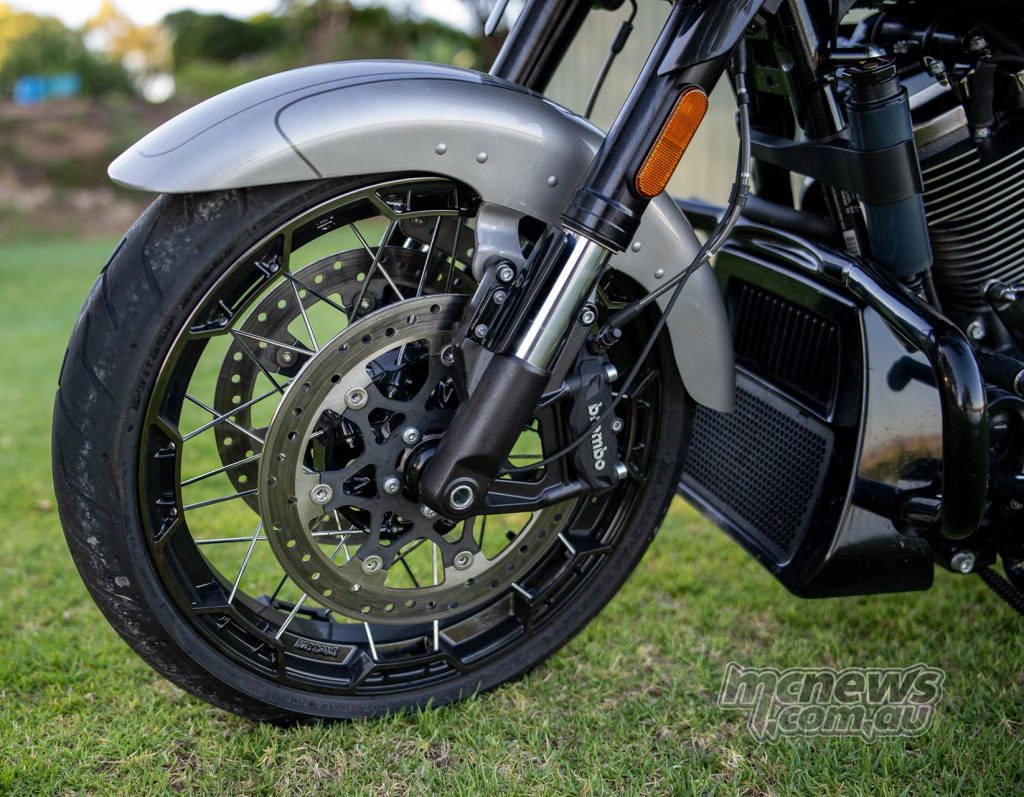
The 47 mm forks are not adjustable, while the dual emulsion shocks are adjustable for pre-load and rebound. On good surfaces, the suspension works well enough, and it handles the big hits better than any big-twin Harley that has gone before it.
It has 50 per cent more shock travel than its predecessor, so it is a huge step forward, but truly big hits will still have you letting out an audible gasp of pain in your helmet as your spine gets compacted. This only happened to me twice, and they were some really big sharp-edged pot-holes, but it did happen and needs to be mentioned, as these impacts were still felt much more harshly than they would have been on most motorcycles. In this regard, this model is vastly improved from earlier incarnations, but could still be improved.
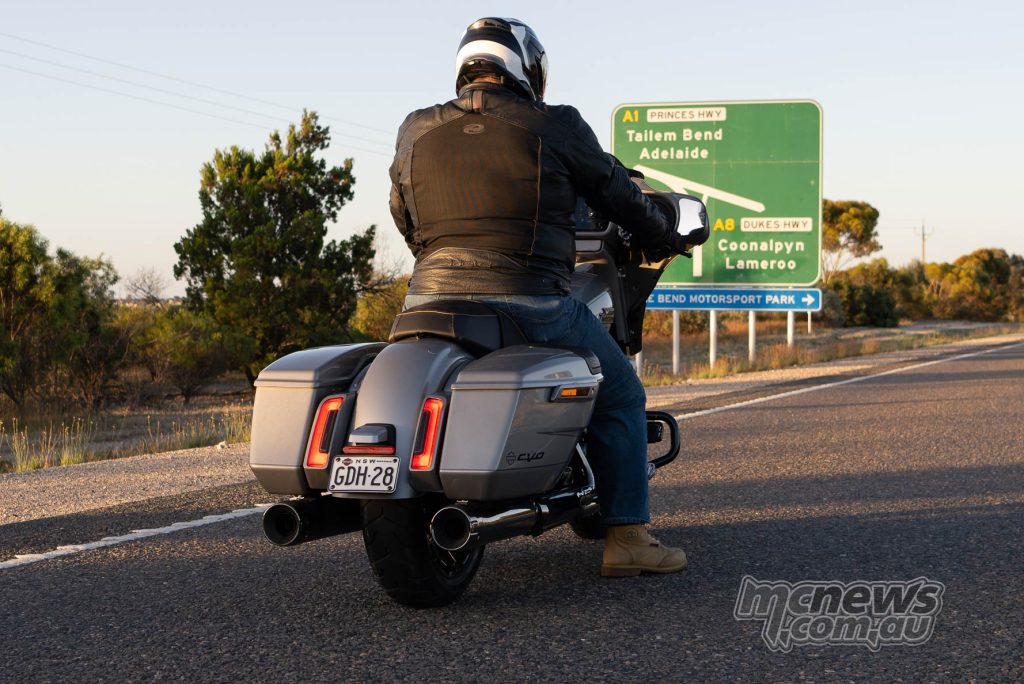
Ground clearance is pretty good, and the cornering clearance is way better than almost every other big-twin Harley in the range. You do have to have a bit of a go to touch any hardware down, especially if you know how a Harley should be ridden.
Braking performance is ample, thanks to big Brembo hardware. 320 mm rotors and radial four-piston calipers up front aided by a strong stopper at the rear.
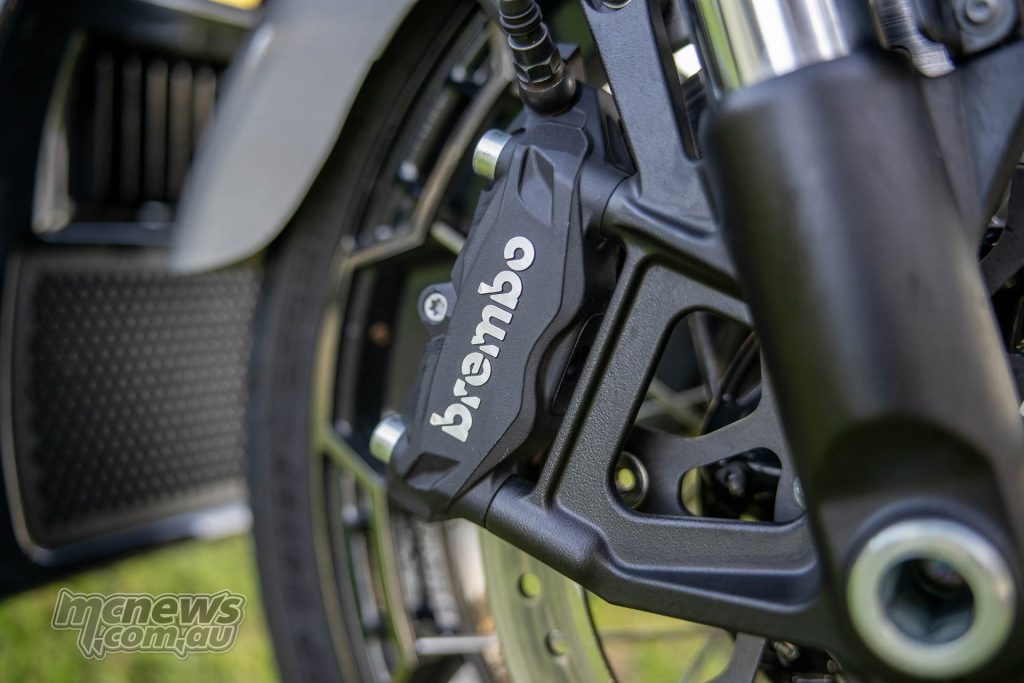
The gearbox is much improved, with only the sometimes serious clunk into first, reminding you of just how much mass is swinging around in those crankcases.
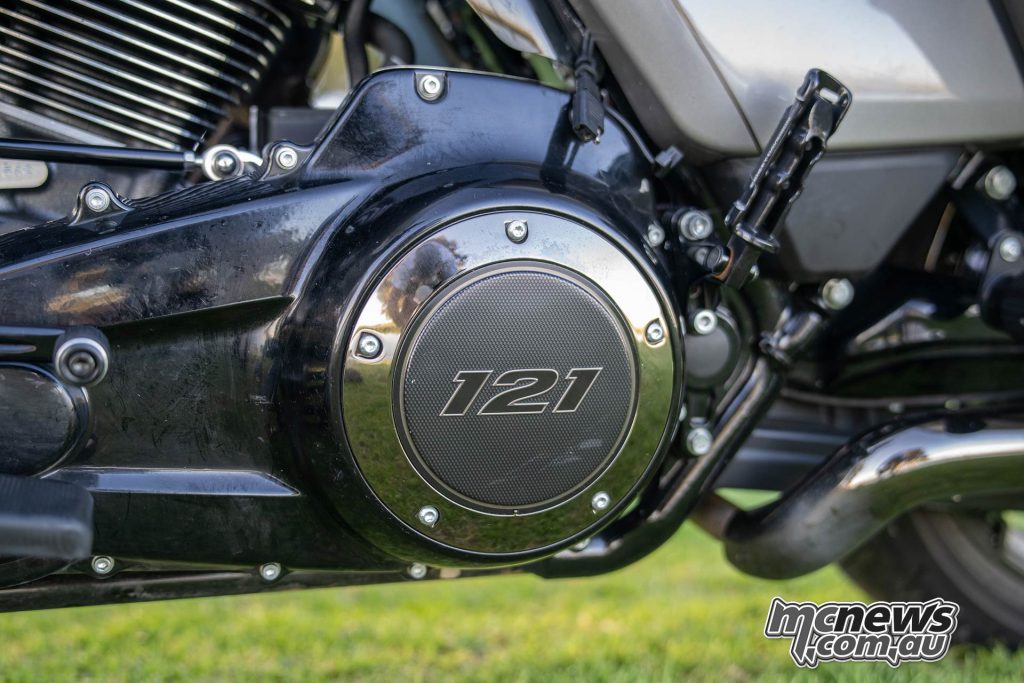
Cruise control is standard but not adaptive. Tyre pressure monitoring is also standard but not that easy to find in the menu system. Heated grips are standard.

Overall though, the systems are quite intuitive. I could tune a radio station and save it without consulting any instructions or guides. I was also able to set a destination in the factory navigation system without too much head-scratching. It is quite possibly the best-executed infotainment system in the business.
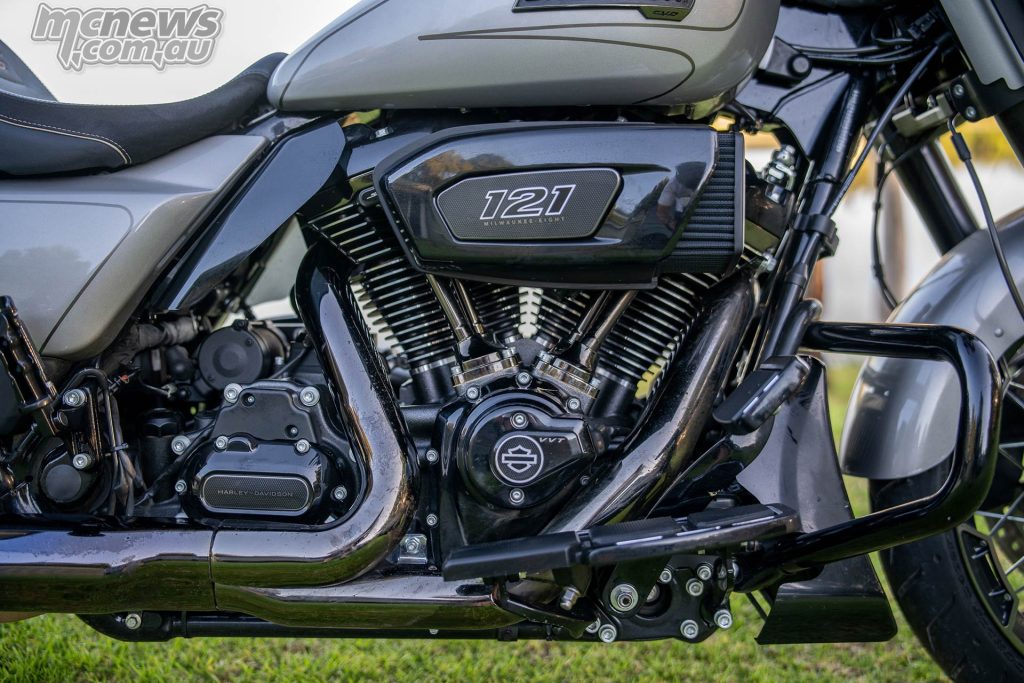
One of the major reasons buyers would take the CVO Street Glide over the regular model is the wonderful piece of kit that is the ‘Milwaukee Eight 121 VVT’. At 1977 cc it is the biggest engine ever to grace a Harley-Davidson. Size does matter, after all… However, these bikes are 14 kg lighter than their predecessors.

I love all the iterations of the Milwaukee-Eight engine. They are 100 per cent fit for purpose in a cruiser-style motorcycle. Wonderfully smooth off the bottom, and with such effortless torque right from idle, this line of engine delivers. In this 121 guise, it pumps out eight per cent more torque and nine per cent more power than the already well-endowed 117.

The compression ratio is bumped up from 10.2 to 11.4:1, the air-box is larger, and the single 58 mm throttle body offers 3 mm more girth than the one fitted to the 117. The cylinder heads are also plumbed into a small liquid-cooling system to help keep exhaust valve temperatures under control. A small radiator is nestled between the frame down-tubes.
There is ample torque everywhere that culminates at 183 Nm at 3500 rpm. The main difference between the 121 and the 117 is how much harder the bigger engine likes to rev.
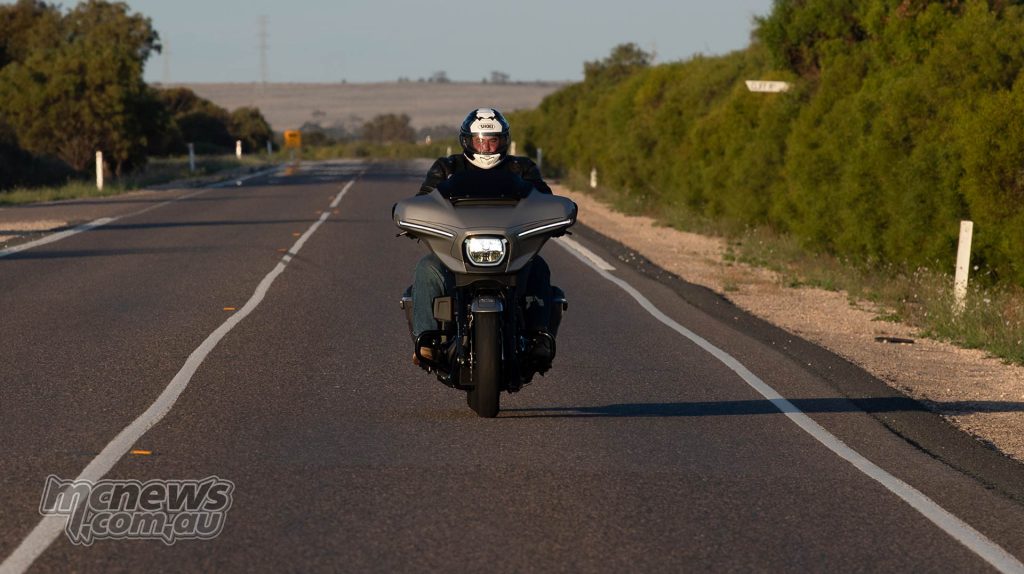
There are riding modes to choose from, and I preferred the ‘Road’ mode overall as the ‘Sport’ mode was a little too urgent for my mood.
Harley has slotted quite an aggressive cam profile for top-end shove. When the variable valve timing imperceptibly switches to these lobes, the nicely styled digital tachometer sweeps around towards 6000 rpm pretty quickly. Thanks to that generous over-rev, this helps reduce the need for gear-changes even further. Otherwise, you will not stray much past 5000 rpm, as maximum power is delivered only 20 rpm over that mark.
Interestingly, the Australian specification of the bike claims half a dozen newton-metres less than what the Americans receive. Our bikes do get an identical claimed 115 horsepower but reach that peak 520 rpm higher than in America. Australian-delivered machines use a slightly different muffler design, and the testing methods used between the two markets differ. In the USA, the J1349 testing standard is used, while here we use ECU134. So, at the end of the day, the difference is quite likely negligible.
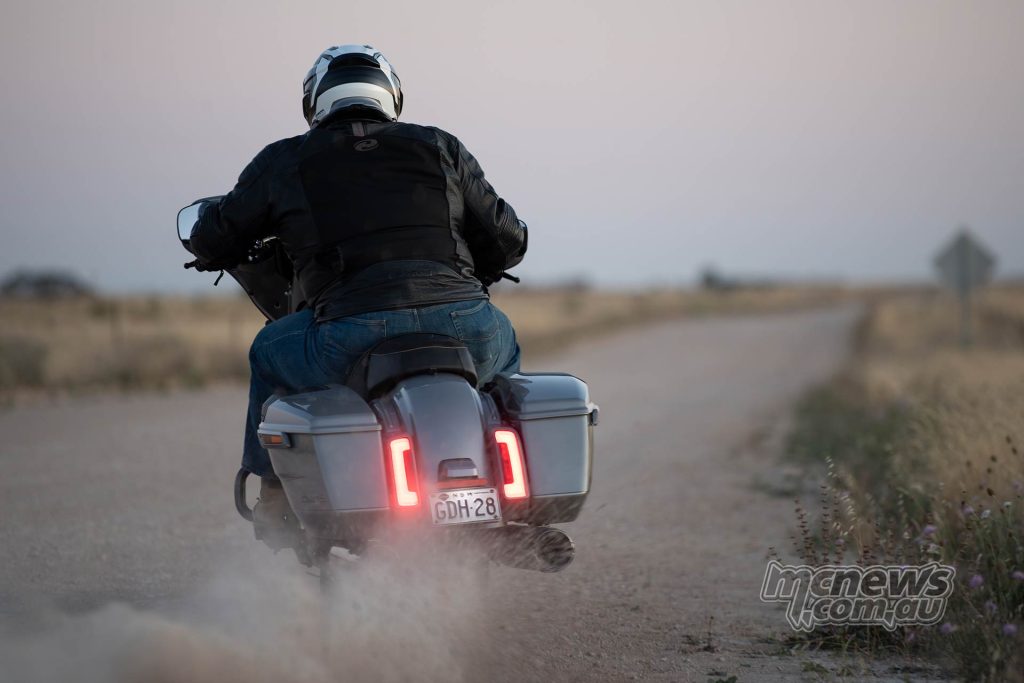
That ability to rev suggests that a freer flowing set of pipes, along with a less restrictive intake and a tune, would easily liberate quite a few more horses without the need for opening the engine at all. I can’t say I would bother.
I love the long sweeping low-mount twin pipes, and these are many levels above some of the tin fitted to many regular Harleys.

This attention to detail continues throughout the machine. The pegs are special. The grips are special. Even the switch-blocks and buttons look bespoke.
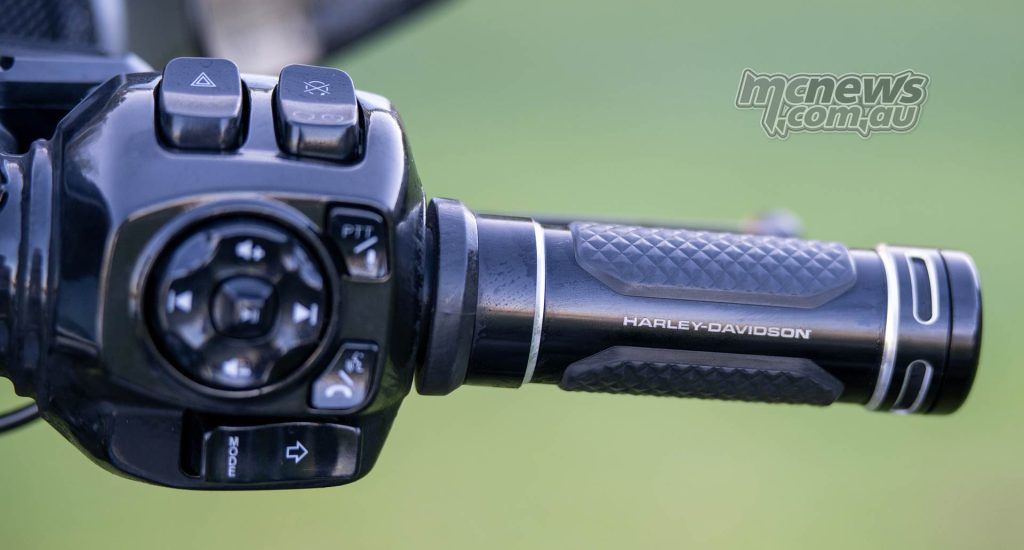
Those rims, 19-inch at the front and 18-inch at the rear, are also something to behold and admire.

The lighting, though, is the piece de resistance. I had to get Rob to shoot this bike at dusk to try to do the truly beautiful lighting justice. The thin sweep of light across the batwing fairing and the outer ring around the headlight combine to produce a look that I could never tire of.

At the rear, the lighting treatment is also a masterpiece. This bike is handsome by day, but when the sun goes down, it truly shines.

There is no doubt when it comes to traditional Harleys, the CVO Street Glide and its CVO Road Glide cousins are the pinnacles of the Big-Twin range. They are more comfortable, look better, handle better, and go harder than any traditionally styled Harley has ever gone before. I would love one.

| 2023 Harley-Davidson Street Glide CVO Specifications | |
| Engin | Milwaukee-Eight™ 121 VVT |
| Bore /Stroke | 103.5 mm / 117.5 mm |
| Displacement | 1,977 cc |
| Compression Ratio | 11.4:1 |
| Fuel System | Electronic Sequential Port Fuel Injection (ESPFI) |
| Exhaust | 2-1-2 dual exhaust |
| Performance | Testing method ECU134 |
| Engine Torque | 183 Nm |
| Engine Torque (Rpm) | 3500 |
| Horsepower | 115 HP / 86 kW @ 5020 rpm |
| Length | 2,410 mm |
| Seat Height, Unladen | 715 mm |
| Ground Clearance | 140 mm |
| Rake / Trail | 26 /170 mm |
| Wheelbase | 1,625 mm |
| Front Tyres | 130/60B19 M/C 61H |
| Rear Tyre | 180/55B18 M/C 80H |
| Tyre, Type | Dunlop™ Harley-Davidson Series, bias blackwall front and rear |
| Fuel Capacity | 22.7 l |
| Oil Capacity (W/Filter) | 4.7 l |
| Weight, As Shipped | 363 kg |
| Weight, In Running Order | 380 kg |
| Luggage Capacity -Volume | 0.062 m3 |
| Lean Angle, Right (Deg.) | 32 |
| Lean Angle, Left (Deg.) | 32 |
| Fuel Economy Testing Method | EU 134/2014 |
| Fuel Economy | 6 l/100 km |
| Primary Drive | Chain, 34/46 ratio |
| Gear Ratios (Overall) 1st | 9.593 |
| Gear Ratios (Overall) 2nd | 6.65 |
| Gear Ratios (Overall) 3rd | 4.938 |
| Gear Ratios (Overall) 4th | 4 |
| Gear Ratios (Overall) 5th | 3.407 |
| Gear Ratios (Overall) 6th | 2.875 |
| Front Fork | 47 mm Inverted 1×1 Front Forks |
| Rear Shocks | Dual adjustable emulsions suspension with remote preload adjustment on the left shock, and threaded preload on the right shock |
| Wheels, Front Type 4 | Combo Cast Laced |
| Wheels, Rear Type 4 | Combo Cast Laced |
| Brakes, Type | Dual floating rotors (front), fixed rotor (rear) |
| Brakes, Caliper Type | 32 mm, 4-piston fixed dual radially mounted front, and single axially mounted rear |
| Lights (As Per Country Regulation), Indicator Lamps | LED |
| Gauges | Digital gauges integrated within the display |
| Infotainment System | Skyline™ OS |
| Type | Full-Color TFT |
| Screen Size | 312 mm |
| Watts Per Channel | 125 |
| Speakers | 4 |
| Speaker Size | Two 6.5in fairing speakers, and two 5x7in saddlebag speakers |
| Headset Specifications (If Equipped) | Harley-Davidson Audio 30K Wireless or 50S Wireless Headset depending on configuration |
| AM | Standard |
| FM | Standard |
| SD Card, Flash Drive, And MP3 – Via USB Connection | Supported |
| Languages | English (US/UK), German, Spanish (Mexico/Spain), French (Canada/France), Italian, Danish, Japanese, Chinese (Simplified), Swedish |
| Hands-Free Mobile Phone – Via Bluetooth | Standard |
| Voice Recognition Languages: Phone Functions Only | Phone dependent (n/a for Japanese & Chinese) |
| Voice Recognition Languages: Tuner/Media/Navigation | Phone dependent |
| Text-To-Speech (Tts) Languages | Phone dependent |
| Rider/Passenger Intercom | Standard (passenger headset sold separately), VOX is available for HD headsets |
| Vehicle Information Screen (Air Temperature, Oil Pressure, And Eitms) | Standard |
| USB | USB-C/MTP/iPod/iPhone, any device with proper adapters to the electric power outlet located in the inner fairing storage. |
| Bluetooth | Phone/Media Player, Headset |
| Anti-Lock Brake System (ABS) | Included |
| Electronic Linked Braking (ELB) | Included |
| Traction Control System (TCS) | Included |
| Drag-Torque Slip Control System (Dscs) | Included |
| Vehicle Hold Control (Vhc) | Included |
| Tire Pressure Monitoring System (Tpms) | Included |
| Cornering Enhanced Anti-Lock Brake System (C-ABS | Included |
| Cornering Enhanced Electronic Linked Braking (C-ELB) | Included |
| Cornering Enhanced Traction Control System (C-TCS) | Included |
| Cornering Drag-Torque Slip Control System (C-DSCS) | Included |










